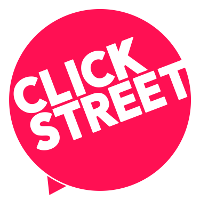Before you can effectively start promoting and selling your products or services, you need to have a clear understanding of who you are selling them to. Your target audience should reflect both the content that you create, and where you promote it. You need to know who they are, what questions they are asking, and where they are looking for answers.

Who Is Your Audience?
As a business owner you may already have an idea of who your target audience is, or what your ideal customer looks like. However, there are many tools available to help you narrow down your target audience, and find out how they think.
Useful Tools:
Google Analytics
Google analytics is a free tool that provides crucial data about your audience and activity on your website. Once you set up an account, you can track a wide range of data points including vital information about the average person who visits your website. Tracked data points include age, gender, location, browsers and which devices they use.
Note: If you’re new to Google Analytics it can be difficult to navigate the complex interface to locate the relevant data about your audience.
Facebook Ads Manager
Once you have identified who your main audience is made up of, you can use Facebook Ads Manager to estimate the size of your audience. For example, the data from your Google Analytics account may show that most of your site visitors are women in Queensland who are interested in gardening. You can then plug that information into Facebook Ads Manager to get an estimate of your audience size.
This information will give you an idea of whether or not you should broaden the range of your content (if the audience is too small), or narrow down the demographic you want to appeal to (if your audience is too large).
Note: Audience size is calculated using Facebook data and does not include consumers who don’t use Facebook so accuracy will vary. However, considering the fact that Facebook has 2.32 billion monthly active users as of the fourth quarter of 2018, it is a good starting point.
Once you have a general idea of who your audience is, you can create a persona based on this information. Creating a persona based on your average customer is a great way to personalise your content and make sure that it engages your target audience. This is because when you write your content with the persona in mind, it will become much more relatable to your target audience.
To create a persona, simply create a fictional version of your ideal customer. Give them an age within the average age of your site visitors and other qualities based on your research such as gender, job, location, etc. Then use the chosen qualities to answer questions about your persona such as what are their goals? Hobbies? Successes or barriers to success?
Once you have fleshed out your fictional persona you will be able to create personalised content that will resonate with your audience and fit right into the conversations that they are already having.
What Questions Are They Asking?
It is essential that your content is created to slide seamlessly into the conversation or thought process that your potential customers are already having. To do this you will need to know what questions they are asking, and how best to answer those questions in a way that fits into their existing conversation.
There are many tools that you can use to find frequently asked questions in your industry.
Useful Tools:
Answer The Public
Answer The Public generates the most commonly asked questions on a given topic. You can type in any keyword or term related to your products or services and it will generate a list of real questions that people are asking about that term.
Keyword Explorer
Keyword Explorer is a keyword research tool, created by Moz, where you can type in any keyword, and it will produce a range of data based on that keyword, as well as related keyword suggestions.
In the keyword suggestions section there is an “are questions” modifier that you can use to filter the results. This will leave you with a list of questions that are related to your keyword or term, as well as the average search volume for each question.
Once you know what questions your target audience is asking you will need to create content that will fit into the conversations that they are already having. For example, if a common question your consumers ask is “which is better: Apple or Samsung?” An article with a thorough comparison between Apple and Samsung would fit into the conversation much better than an article on all of the features of a Samsung phone alone.
Another way to ensure that your content fits into the existing conversations of your target audience is to identify and mimic their tone. If you are targeting an audience of young adults and adolescents who tend to have a more colloquial tone, your content will be better accepted if you match that tone, rather than writing a formal, informative piece full of technical terms.
Conversely, if the majority of your target audience is made up of slightly older people with full time corporate jobs, the same article may be dismissed as unprofessional and uninformed.
Where Are They Looking?
Once you have established what content to create and the correct tone of voice to use to appeal to your target audience, you need to find out what platforms they are active on, and then get your content in front of them by promoting it where they’re already looking.
For example, for the younger audience mentioned earlier, promoting your content on social media platforms such as snapchat and facebook will likely increase your return on investment. Whereas, for the working class audience, your article may be better promoted on industry forums, twitter, or blogs where they are most active.
Useful Tools:
Google Analytics
Not only can you use Google Analytics to identify your audience, you can also use it to determine which social media platforms are bringing in new traffic to your website. The acquisition section of Google Analytics will break down what percentage of new traffic to your website is brought in by each social media platform.
Customer Survey
The best way to find out which social media platforms your customers prefer is to ask them. If you’ve already been in business for a while, a customer survey can be a very useful tool to determine which social media platforms your customers use most frequently. There are many online tools that you can use to create a customer survey including Google Forms or Survey Monkey.
Now that you’ve identified your target audience, you need to break down the trust barrier.
[Click Here to find out How To Build Trust With Your Target Audience]
Want To Boost Sales?
Get A Free Digital Strategy Session
Taking the bold lunge into business but not 100% sure where to start online? The truth is most business owners aren’t really sure where to start when it comes to bringing in customers that aren’t word of mouth.
Thats where we come in. We’re passionate about helping local Brisbane businesses thrive, and we know what you need to do to get your business moving.

© 2018 Click Street. Privacy Policy Disclaimer
